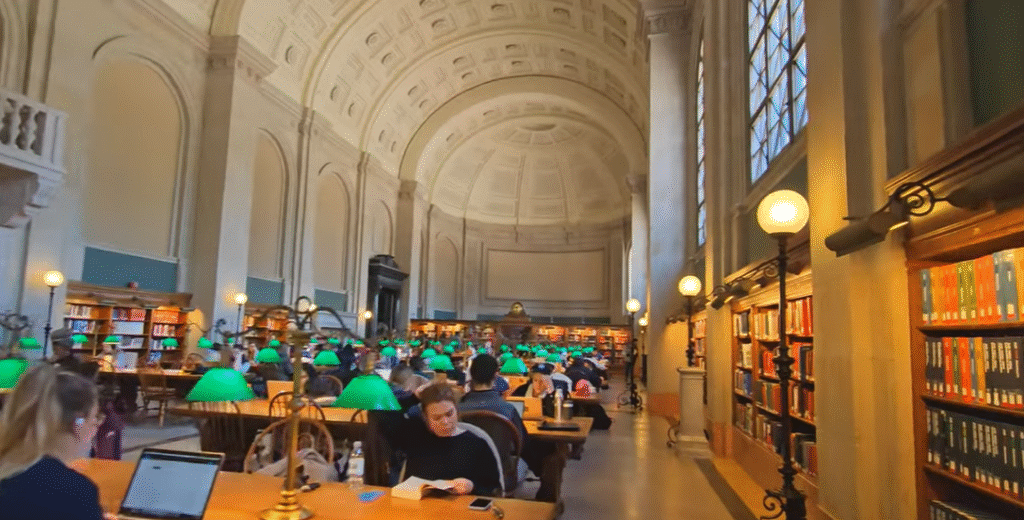Finding a niche and trending topics in the travel and tourism sector has become just as important as packing a passport. Travelers’ growing demand for experiences that reflect their values has caused global tourism spending to surpass USD 2 trillion in recent years, according to Caroline Bremner of Euromonitor. This change is particularly evident in the rise in popularity and profitability of niche markets like luxury getaways, eco-travel, and wellness retreats, which present new opportunities for creatives, agencies, and business owners with the quick thinking to take action.
For determining the direction of attention, Google Trends is still a very useful compass. A new phenomenon, like “workcations” during the boom in remote work or “slow travel” as people sought less hectic itineraries after pandemic fatigue, causes search volumes to spike. Through the observation of these digital ripples, entrepreneurs are able to predict interest waves well in advance of rivals. When athletes like Lewis Hamilton or influencers like Chiara Ferragni share photos of peaceful rural getaways, their millions of followers see not just a trip but a way of life worth imitating. Celebrities frequently validate these searches.
Social media sites offer an additional dynamic layer. Instagram is fueled by aesthetics; a single picture of a turquoise coastline can spark interest in whole regions. TikTok is especially creative at highlighting hidden locations with its short-form virality; take a look at how a few viral videos transformed the bay towns of Montenegro into must-visit locations. Travel companies can learn a lot from this lesson. By keeping an eye on hashtags, engagement spikes, and trending sounds, they can find and enter micro-niches that feel very flexible, from culinary street tours to secret hikes that were previously only known by locals.
| Name | Profession | Expertise | Link |
|---|---|---|---|
| Caroline Bremner | Head of Travel Research, Euromonitor | Global travel trends, consumer insights, sustainability in tourism | https://www.euromonitor.com |
| Antonio M. Valdez | CEO, Domtrens | Digital trend analysis, niche discovery tools | https://domtrens.com |
| Brittany Sawyer | Travel Blogger | Travel niches, blogging strategies, affiliate travel marketing | https://www.travelpayouts.com |
| Augustin Digital | Content Strategist | Travel influencer storytelling, new content creation | https://digitaltravelexpert.com |
| TicketingHub Editorial | Travel Tech & Distribution | Tourism niches, booking platforms, market demand | https://www.ticketinghub.com |

Wikipedia and Google Suggest may appear to be surprisingly inexpensive resources in this digital age, but they have intriguing depth. Searching for “luxury travel” on Google yields results such as “luxury eco-resorts” and “luxury train journeys,” which successfully map consumer intent. By connecting adventure travel to mountaineering, diving, and trekking, Wikipedia’s interconnected entries highlight subcategories that have the potential to develop into stand-alone niches. When compared to keyword data, these recommendations are noticeably better routes to content concepts that are both popular and long-lasting.
The market is dominated by exclusivity, personalization, and sustainability, according to current trends. Due to the fact that people are willing to pay more for guilt-free travel, eco-tourism is becoming more and more popular. Clients who seek out exclusive, upscale experiences keep luxury afloat even as prices rise. The most notable growth is in hybrid forms, such as “art-venture” travel, which combines cultural immersion with interactive workshops, or “gami-vacations,” where gaming enthusiasts organize trips around conventions and experiences. Adventure and cultural tourism continue to be popular. These categories are especially creative because they appeal to tourists who previously felt that traditional offerings were lacking.
Personal interests frequently direct the search for a niche. A food-loving blogger can develop a devoted following by showcasing everything from Michelin-starred tours in Tokyo to street markets in Mexico City. Euromonitor predicts that a 15% increase in sports tourism packages in 2025 will be driven by sports fans who travel for major events like the Paris Olympics, cycling races, and marathons. Because audiences connect with authenticity—they recognize content created with real curiosity rather than repurposed marketing—aligning personal passions with data-driven insights is incredibly effective.
Platforms that provide hourly updates on emerging keywords across 80 countries, such as Domtrens, make trend-hunting easier on the technical side. While content is still king, trending content is the holy grail, according to CEO Antonio Valdez, and it can drastically cut down on the time it takes to scale visibility. Through the use of real-time intelligence, this technology is especially helpful for small creators or new travel startups, providing a means of competing with big, established agencies.
The need for travel influencers to go beyond glossy perfection is emphasized by Augustin Digital. Their audience is hungry for authentic experiences; mishaps, missed flights, and even spectacular failures are all considered valuable content. In the eyes of their communities, these unvarnished moments make creators incredibly trustworthy because they represent travel in all its forms, not just carefully manicured beauty. A story about gelato spilling in Rome or luggage going missing in Bali can be surprisingly inexpensive to produce but incredibly powerful in fostering loyalty and trust.
Discovering a tourism niche and trending topics has wider effects than just personal benefit. Travelers who are directed to less-traveled locations benefit entire communities. Small towns and rural areas see significant economic improvements as a result of tourists diverting their spending from crowded centers. But with this advancement comes responsibility. As we are reminded by the advocacy of celebrities such as Leonardo DiCaprio, sustainable tourism must not overburden delicate ecosystems. The harmony between fame and privacy in the world of celebrities is remarkably similar to the balance between visibility and preservation; too much publicity can destroy the very allure that initially drew people in.
In this process of discovery, artificial intelligence is becoming more and more important. Travel planners powered by AI create highly customized itineraries in a matter of seconds, recommending locations based on user behavior. Despite being much faster than conventional agents, they occasionally cause mismatches due to their lack of human nuance. A hybrid model that uses humans as curators and AI as a filter ensures that decisions are made with both efficiency and empathy. Particularly inventive, this combination suggests a future in which storytelling and technology will combine to influence how we imagine travel.
